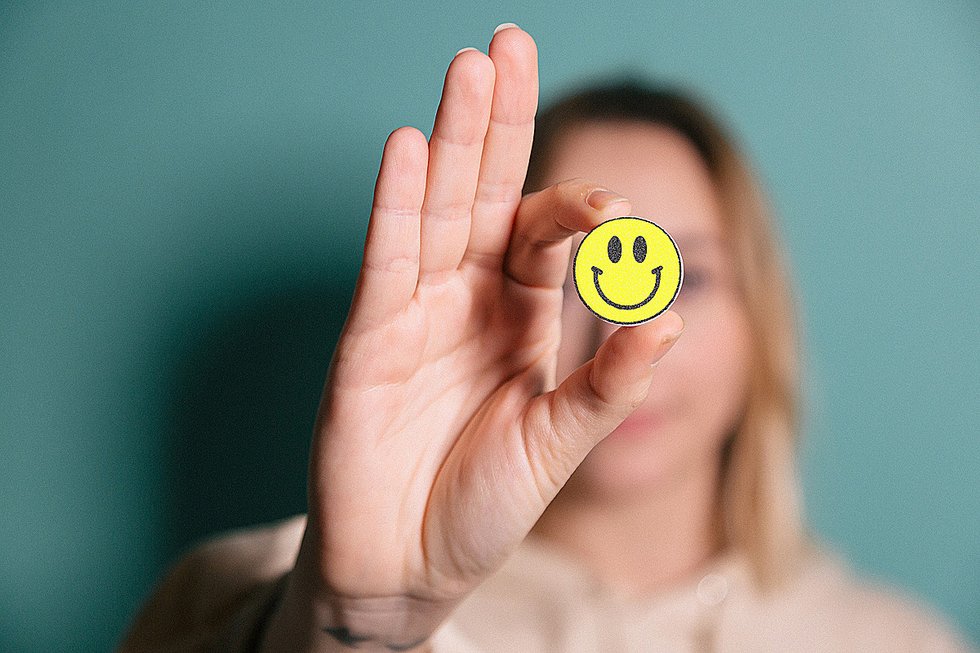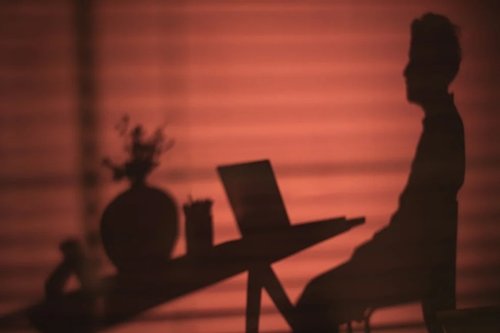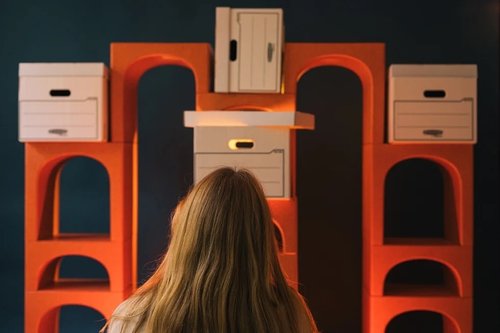Microdosing LSD at work: from those who practise it
Jan 03, 2020
8 mins


Journaliste - Welcome to the Jungle
It’s Monday morning and Jeremy begins his day. He takes a cold shower, drinks a cup of tea with a bowl of muesli, does some stretching and takes 10 micrograms of LSD before leaving for work. A cold shower and LSD, first thing in the morning? For those practising microdosing, it’s all part of their routine.
The concept is simple: ingest a tiny dose of a psychedelic drug before leaving for work. The reduced doses won’t make for a mind-altering workday; they’ll increase productivity and creativity and reduce anxiety and stress. Since the release of his book Psychedelic Explorer’s Guide: Safe, Therapeutic, and Sacred Journeys in 2011, the American psychologist James Fadiman has built a decent following of converts. A quick Google search turns up over one million hits, demonstrating just how popular the practice has become, especially in the Silicon Valley. While articles on the subject come from a range of politically-situated and reputable media sources, they often share the idea that microdosing is a “magic solution” to achieving happiness at work.
What are the benefits and risks? How did microdosing make psychedelics so mainstream? More importantly, what has motivated certain people to replace their morning coffee with a tiny hit of LSD?
The ins and outs of microdosing
Hallucinogenic drugs are often associated with the counterculture of 1960s America, when hippies under their influence battled the forces of capitalism. Now, in 2019, it is capitalism’s turn to experiment. While hallucinogenic drugs might seem opposed to the pursuit of corporate success, in Silicon Valley, the practice of microdosing at work has become widespread in recent years. Developers, mathematicians and data engineers from major corporations and California unicorns are behind the shift from caffeine to mind-altering substances.
Following the therapeutic guidelines provided on numerous forums and blogs dedicated to the subject, microdosing fans have been able to create a programme of safe consumption. The practice has gone mainstream but has yet to become part of everyday watercooler conversations. That’s why online communities have played such a big role in spreading the word. While Silicon Valley is still considered the hotbed of microdosing, the rest of North America and the world is becoming increasingly familiar with the fringe practice.
The three most common drugs for microdosing are LSD, psilocybin or “magic” mushrooms and mescaline, which is found in the Peyote cactus. The quantity recommended for safe use–the point is to avoid getting wasted–is two to three microdoses per week, with at least two days between each dose. If you follow these guidelines, then the people around you won’t suspect a thing; such a small dose is around one-tenth the dose of LSD usually ingested to “get high”. However, if you start seeing things and think your boss is turning into a giant snake, you’ve probably taken too much.
Positive effects on productivity and creativity
According to certain testimonials, podcasts and articles, microdosing is an alternative solution to a range of issues from poor concentration to digestive troubles and even decreased productivity. Furthermore, people who share their experiences of microdosing online rarely, if ever, have something negative to say.
John is 24 and works for an international company as a data scientist. While studying psychology at university, he became interested in alternative medicine and therapy and soon found out about Fadiman’s book. After graduation, he was working as a freelancer when he decided to try microdosing out for himself. The experience was life-changing. He described it as, ”A soft, warm feeling comes over you, like when you get goose bumps listening to your favourite music, or spending an unforgettable day with a close friend or looking at a beautiful café. Basically, every day turns out to be a good day. At work, you feel ready for anything and even enjoy doing everyday tasks.”*
According to research conducted by a team of psychiatrists from McGill University, San Raffaele Scientific Institute and Vita-Salute University, microdosing stimulates the serotonergic system, the neurotransmitter responsible for regulating stress and anxiety levels and enhancing mood. Hence the overall feeling of positivity that John described.
At work, it can also help your brain make logical connections. John said, ”Microdosing helps me gain a different perspective with respect to my work. It makes it easier to unpack the complex problems I’d normally get stuck on. At the same time, don’t look for a quick fix. It’s super helpful, but it’s not magic.” Another user, Eric, 30, works in advertising. He described his experience in similar terms, “Microdosing allows me to look at certain data differently. My brain makes logical connections that I wasn’t able to see before. Since it connects ideas that I would never normally connect, I become more creative.”
The effects can also extend to those around you. Speaking on the podcast SmartDrugSmarts, Fadiman suggests that microdosing also makes us more tolerant. During one of his microdosing experiment, a user told him, “Idiots no longer seem so idiotic.” You’ve probably never imagined that LSD could help you face that annoying colleague on the third floor.
Potential risks
Not only are the substances required to practice microdosing totally illegal but using them also comes with certain risks.
Lots of experiments, fewer controlled studies
If reading thus far has inspired you to experiment with psychedelic therapy, keep in mind that little is known about their long-term effects. The internet is flooded with first-hand accounts and experiential reports, but there aren’t many serious studies to show what microdosing does to the brain in the long run. Fadiman, the psychologist who kicked off the phenomenon, agrees more research is needed. During his interview on the SmartDrugSmarts podcast, he says he doesn’t know of any other microdosing experiments aside from his own.
Health risks
You probably know that even a tiny dose of hard drugs every three days can come with health risks. For one, LSD is known to increase the risk of cardiovascular disease. It can even give rise to certain mental health issues such as schizophrenia. Furthermore, as with all mind-altering substances, the effects are unpredictable and microdosing can lead to undesirable or adverse reactions in some individuals. Even if users hope to gain some kind of relief, they may end up experiencing intense anxiety or even paranoia. This is what happened to Anna, who gave it up after a few months. ”On more than one occasion, I felt really down, exhausted and apathetic the day after. I spent all day watching television and had no desire to take care of myself or leave the house. I stopped shortly after those episodes. I feel that the higher the stress level is on the day you take it, the harder it is for you the day after,”* said Anna.
How did we get here?
With insufficient regulated research on the subject and some proven effects on health, people might wonder who would take such a risk.
The pressure to function at 200%
While microdosing is a known alternative therapy for treating depression and anxiety, that’s not the main reason users are willing to try it out. In a recent article published by The International Journal of Neuropsychopharmacology, research indicates that 36.6% of people try microdosing as a performance enhancer. “Honestly, when I first found out about microdosing, I was very curious about its effects. When you’re told there’s a way to be more productive without negative effects, it’s pretty tempting, isn’t it? At that time, I was also super interested in biohacking and human augmentation. That’s not exactly why I tried it, but let’s just say it was a huge part of my curiosity,” says John. In the documentary Take your pills, Wendy Brown, a political science and philosophy professor, suggests that *such substances are meant to drive us to achieve our full potential for as long as possible. They help us meet the high demands of today’s professional world. While giving something 200% has a nice ring to it, it’s probably neither physically nor mentally feasible.
In the United States, considered the birthplace of microdosing, one in two Americans have experienced burnout at some point, which usually ties back to an excessive workload. Biohacking could well be another reason why microdosing has become a serious business. Without something extra, most people worry about a lack of inspiration, efficiency, concentration. Innovation and sleep go hand in hand. And that’s quite normal, because if we all functioned at 200% all of the time, we would be machines.
The vicious cycle of competition
When asked why he decided to try a psychedelic experience, ad executive Eric said, ”I read in several reputable media sources that some of the biggest entrepreneurs in Silicon Valley were into microdosing. Since these people inspire me, I just thought that it could help me achieve my professional goals as well. If it works for them, then it’s worth a shot. Obviously, it’s only a tool, because success shouldn’t revolve around microdosing!” The pressure to succeed and competition can also push some employees to try it. It’s only logical given the competitive climate of today’s workplace. *If two people are equally talented, but one practices microdosing, then the person who doesn’t use drugs will naturally feel that they are at a disadvantage. To level the playing field, the non-user will feel compelled to give it a go.
As Professor Brown explained in the documentary mentioned earlier, Adderall, which is a common treatment for ADHD, was also responsible for creating inequality among university students. Logically speaking, if every student studied to the best of their abilities, but only a few took Adderall, then non-users would feel pressured to take performance-enhancing drugs during exams too.
Silicon Valley: New age business model
In August 2019, a New Yorker article entitled Silicon Valley’s Crisis of Consciencedrew a picture of a business culture obsessed with personal development, yoga classes, meditation sessions and self-help seminars. In other words, Silicon Valley had revived the New Age. Today, the archetype of the perfect employee is both productive and balanced: someone who understands that a reliance on technology is unhealthy, and to counteract its effects one must eat well and avoid stress. In essence, nothing must affect professional performance. It all sounds a lot like Billy Bauer, the CEO of a young multinational company in the Smithereens episode of Black Mirror, who goes on a spiritual retreat in the Furnace Valley, cut off from all technology. There’s also the popularity of Netflix documentaries dedicated to streamlining your life, such as Minimalism: A documentary about the important things, Tiny House Nation and Tidying Up with Marie Kondo. Microdosing is the ideal way to respond to these new minimalist demands placed upon today’s employee, since the practice promises a healthier lifestyle and, as a result, enhanced performance at work.
Looking once again at the online evidence such as Twitter and Instagram, it seems microdosing is one way to embrace a much healthier way of life. Eating well, helping others, practicing yoga-whatever your taste, it’s all easier with microdosing. For writer and entrepreneur Nat Eliason, who has had his own experience with microdosing, the practice helped him change his way of life, starting with his morning routine. “Your coffee maker has gone unused for weeks now, having switched to tea since noticing how overpowering the caffeine was to your thinking,” he said. He applies the same approach to technological distraction. “You’ve silenced your phone and computer alerts, as you have become more aware of how negatively they were impacting your attention since you started the dosing.” It even extends to social interactions after work. “Later that evening, out at a bar with some friends, you’re not drinking but don’t feel any compulsion to. While you drank in the past to lower your inhibitions and to relax, you no longer feel the need to do either as you’re more comfortable speaking your mind sober and have maintained a relaxed state throughout the day.” As a result of these changes, he described an increased desire for constructive activities such as reading, yoga or meditation.
Despite all the positive experiences of microdosing, there are still many people who have ultimately chosen to give it up. After trying it out for months, some converts finally put a stop to the psychedelic routine. For them, microdosing ultimately became a way to create a false sense of well-being and avoid real-world problems. It brings to mind Aldous Huxley’s dystopian novel Brave New World, where every citizen takes “Soma” to maintain a perpetual state of happiness. While ensuring a unified and cohesive social structure, it’s also a risky means of escaping any sense of responsibility.
Photo: WTTJ
Translated by Andrea Schwam
*:Names changed to maintain anonymity.
Follow Welcome to the Jungle on Facebook and subscribe to our newsletter to receive our best articles.

More inspiration: Work trends

Workplace influencers: How employee-generated content is changing the game
Who says becoming an influencer means quitting your day job?
Dec 05, 2024

The rise of homeless workers: A hidden crisis fueled by soaring costs
The rising cost of living is putting individuals on the brink of homelessness, even those with full-time jobs ...
Nov 21, 2024

The emotional toll of quitting in Japan—and the role of professional quitters
In Japan, quitting a job transcends professional boundaries, often becoming a deeply emotional and cultural challenge.
Nov 20, 2024

RTO or risk: Are return-to-office mandates harming company culture?
Flexible work policies have become a core expectation for employees and workers are viewing RTO mandates as restrictive.
Oct 30, 2024

Why are workers quitting after getting promoted?
29% of promoted employees quit within six months of their promotion—but why?
Mar 13, 2024
The newsletter that does the job
Want to keep up with the latest articles? Twice a week you can receive stories, jobs, and tips in your inbox.

Looking for your next job?
Over 200,000 people have found a job with Welcome to the Jungle.
Explore jobs